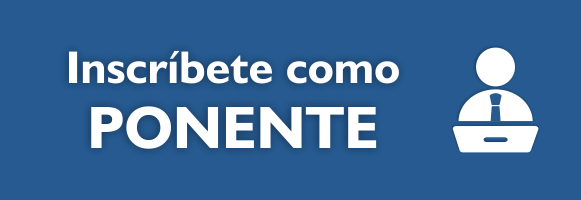Superando Los Desafíos de la Educación: Efectos de la Violencia Estructural Y Avances en la Educación de Calidad en Colombia Y Pakistán
Resumen
Lejos de ser únicamente directa, la violencia estructural se mueve sigilosamente dentro de los marcos mismos de la sociedad, dañando de maneras nunca vistas. Sus daños no se manifiestan en golpes físicos sino a través de la arquitectura de la injusticia, de las desigualdades grabadas en políticas, leyes y normas. Teniendo esto en cuenta, el objetivo principal de este artículo es presentar cómo se produce la violencia estructural en el objetivo de desarrollo sostenible de Educación de Calidad (ODS4) en Colombia y Pakistán. Para hacerlo posible, se definirán la violencia estructural, así como los objetivos de desarrollo sostenible, y en particular su objetivo 4 sobre calidad de la educación. Asimismo, se analizará cómo el ODS-4 se correlaciona con otros objetivos de desarrollo sostenible. Este estudio adopta un enfoque cíclico y exploratorio para el desarrollo de la teoría como su andamiaje, específicamente la metodología de la Teoría Fundamentada. Las técnicas de recolección y análisis de datos siguen el método mixto con un diseño teórico transformador que prioriza los hallazgos de las entrevistas cualitativas. Los resultados resaltan el estado actual del ODS-4 en Colombia y Pakistán, iluminando cómo los arraigados prejuicios sistémicos y la discriminación socavan la educación de calidad. Los expertos esbozan recomendaciones interrelacionadas, como la inversión sostenida en los sistemas educativos, la creación de reconocimiento social de la educación como un derecho humano, la participación de las comunidades para cambiar las creencias y normas discriminatorias y el centrar la fuerza de acción en los grupos más marginados por medio de reformas políticas y sociales. Entre otras recomendaciones, se aboga por un enfoque multifacético que combine la provisión de recursos de arriba hacia abajo y la sensibilización de abajo hacia arriba. Superar la violencia estructural requiere transformar las estructuras sistémicas y, al mismo tiempo, cambiar la mentalidad social que perpetúa la discriminación en la educación.
Descargas
Citas
Abdulrahim S, Miranda, P. Viruell-Fuentes E. (2012). More than culture: Structural racism, intersectionality theory, and immigrant health, Social Science and Medicine, vol. 75, no. 12, pp. 2099-2106.
Bytheway, J. A. (2018). Using grounded theory to explore learners' perspectives of workplace learning. International Journal of Work-Integrated Learning, 19(3), 249-259.
Berents, H. (2013). From the margins: conflict-affected young people, social exclusion, and an embodied everyday peace in Colombia. PhD diss., School of Political Science and International Studies, The University of Queensland.
Bishop, E. (2014). Critical literacy: Bringing theory to praxis. Journal of Curriculum Theorizing, 30(1).
Brotman S, Lee Ou Jin E. L. (2013). Structural Intersectionality and Anti-Oppressive Practice with LGBTQ Refugees in Canada. Canadian Social Work Review.
Chakrabarty, S., & Rai, S. (2020). A discourse on the face of structural violence in Indian society. In S. Ghosh (Ed.), Structural violence and social hierarchy: Critical intersections. Routledge. 72.
Charmaz, K. (2005). Grounded theory in the 21st century: Applications for advancing social justice studies. In Qualitative Research Conference, May, 2003, Carleton University, Ottawa, ON, Canada; Brief excerpts from earlier drafts in a keynote address," Reclaiming Traditions and Re-forming Trends in Qualitative Research," were presented at the aforementioned conference and in a presentation," Suffering and the Self: Meanings of Loss in Chronic Illness," at the Sociology Department, University of California, Los Angeles, January 9, 2004.. Sage Publications Ltd.
Charmaz, K. (2006). Constructing grounded theory: A practical guide through qualitative analysis. sage.
Charmaz, K. (2014). Constructing grounded theory. Sage publications.
Creswell, J. W., & Clark, V. L. P. (2017). Designing and conducting mixed methods research. Sage publications.
Crenshaw, K. (1991). Mapping the Margins: Intersectionality, Identity Politics, and Violence against Women of Color, Stanford Law Review, vol. 43, no. 6, pp. 1241-1299.
Collier, P. (2008). The bottom billion: Why the poorest countries are failing and what can be done about it. Oxford University Press, USA.
Darling-Hammond, L. (1998). Unequal opportunity: Race and education. The Brookings Review, 16(2), 28.
Dawadi, S., Shrestha, S., & Giri, R. A. (2021). Mixed-methods research: A discussion on its types, challenges, and criticisms. Journal of Practical Studies in Education, 2(2), 25-36.
Drassinower, A. (2006). Capturing Ideas: Copyright and the Law of First Possession. Clev. St. L. Rev., 54, 191.
Dutta, U., Sonn, C. C., & Lykes, M. B. (2016). Situating and contesting structural violence in community-based research and action. Community Psychology in Global Perspective, 2(2), 1-20.
Faguet, J. P., Sánchez, F., & Villaveces, M. J. (2020). The perversion of public land distribution by landed elites: Power, inequality and development in Colombia. World Development, 136, 105036.
Fergusson, L., Ibáñez, A. M., & Riano, J. F. (2020). Conflict, educational attainment, and structural transformation: La violencia in colombia. Economic Development and Cultural Change, 69(1), 335-371.
Forbes. (2023). Nearly 1.7 Million Afghan Refugees Face Deportation As Pakistan Nears Crackdown On Undocumented Migrants. https://www.forbes.com/sites/siladityaray/2023/10/31/nearly-17-million-afghan-refugees-face-deportation-as-pakistan-nears-crackdown-on-undocumented-migrants/?sh=57896fa82fff
García-Moreno, C., & Amin, A. (2016). The sustainable development goals, violence and women’s and children’s health. Bulletin of the World Health Organization, 94(5), 396.
Garcia-Ramirez, J., Nikoloski, Z., & Mossialos, E. (2020). Inequality in healthcare use among older people in Colombia. International journal for equity in health, 19(1), 1-15.
Glaser, B. (1967). Strategies for qualitative research. The Discovery of Grounded Theory, 2-6.
Goldstein, J. L., & Krasner, S. D. (1984). Unfair trade practices: the case for a differential response. The American Economic Review, 74(2), 282-287.
Hajikhani, A., Mortazavi, S., & Vaatanen, J. (2021). Quantitative and qualitative analysis of an emerging topic: A mixed method approach on sustainable development goals discourse. In Quantitative and Qualitative Analysis of an Emerging Topic: A Mixed Method Approach on Sustainable Development Goals Discourse: Hajikhani, Arash| uMortazavi, Sina| uVaatanen, Juha. [Sl]: SSRN.
Haynes, J. (2013). Democracy and civil society in the Third World: Politics and new political movements. John Wiley & Sons.
Hales, R., & Birdthistle, N. (2023). The Sustainable Development Goals–SDG# 12 Responsible Consumption and Production. In Attaining the 2030 Sustainable Development Goal of Responsible Consumption and Production (pp. 1-10). Emerald Publishing Limited.
Howes, D. M. (2016). Bad Language: A Study of Structural Violence through Language Policies in Australia.
Jeremić, V., & Sachs, J. D. (2014). The United Nations in the age of sustainable development. The Economic and social review, 45(2, Summer), 161-188.
Kanbur, R., Patel, E., & Stiglitz, J. (2018). Sustainable development goals and measurement of economic and social progress. For good measure: Advancing research on well-being metrics beyond GDP, 33.
Kaplow, L., & Shavell, S. (2000). Should legal rules favor the poor? Clarifying the role of legal rules and the income tax in redistributing income. The Journal of Legal Studies, 29(2), 821-835.
Khushik, F. U. (2021). From education for sustainable development to high quality education (sdg4): challenges and prospects for Pakistan.
Landman, T. (2006). Holding the line: Human rights defenders in the age of terror. The British Journal of Politics and International Relations, 8(2), 123-147.
López, R., & Valdés, A. (2000). Fighting rural poverty in Latin America: New evidence of the effects of education, demographics, and access to land. Economic development and cultural change, 49(1), 197-211.
Naviwala, N. (2016). Pakistan's Education Crisis: The Real Story. Woodrow Wilson International Center for Scholars.
Maher, D., & Thomson, A. (2018). A precarious peace? The threat of paramilitary violence to the peace process in Colombia. Third World Quarterly, 39(11), 2142-2172.
McEwen, C. A., & McEwen, B. S. (2017). Social structure, adversity, toxic stress, and intergenerational poverty: An early childhood model. Annual Review of Sociology, 43, 445-472.
Noltemeyer, A. L., Mujic, J., & McLoughlin, C. S. (2012). The history of inequity in education. Disproportionality in education and special education: A guide to creating more equitable learning environments, 3-22.
Saeed, R. A., & Batool, S. (2021). Pakistan's ‘Aurat March and its Feministic Perspective. AL-QAWĀRĪR, 3(01), 13-38.
Sharif, M. Z., García, J. J., Mitchell, U., Dellor, E. D., Bradford, N. J., & Truong, M. (2022). Racism and structural violence: interconnected threats to health equity. Frontiers in public health, 9, 676783.
Shaheed, F. (2009). Gender, religion and the quest for justice in Pakistan. Geneva: United Nations Research Institute for Social Development (UNRISD) and Heinrich-Böll-Stiftung.
Schoonenboom, J., & Johnson, R. B. (2017). How to construct a mixed methods research design. Kolner Zeitschrift fur Soziologie und Sozialpsychologie, 69(Suppl 2), 107.
Strauss, A. L. (2017). The discovery of grounded theory: Strategies for qualitative research. Routledge.
Thomas, R., Alfonso, E., Gabriela, G., & Pablo, V. J. (2018). OECD reviews of school resources: Colombia 2018. OECD Publishing.
United Nations Educational, Scientific and Cultural Organization. UNESCO. (2017). Unpacking sustainable development goal 4/education 2030.
United Nations Refugee Agency. (2022). Colombia situation. Displacement Data. https://reporting.unhcr.org/operational/situations/colombia-situation#:~:text=2024%20situation%20overview-,Colombia%20has%20one%20of%20the%20largest%20internally%20displaced%20populations%20in,the%20Peace%20Agreement%20in%202016.
United Nations. (2024). The 17 Goals. Sustainable Development. https://sdgs.un.org/es/goals
World Bank. (2021). Supporting Colombian Host Communities and Venezuelan Migrants During the COVID-19 Pandemic. https://www.worldbank.org/en/results/2021/10/31/supporting-colombian-host-communities-and-venezuelan-migrants-during-the-covid-19-pandemic
World Bank. (2022). Government expenditure on education, total (% of GDP) per Country. https://data.worldbank.org/indicator/SE.XPD.TOTL.GD.ZS?locations=PK-TO
Yoon, E. S., & Lubienski, C. (2017). How do marginalized families engage school choice in inequitable urban landscapes? A critical geographic approach. Education Policy Analysis Archives, 25, 42-42.
Zulfiqar, G. M. (2022). Inequality regimes, patriarchal connectivity, and the elusive right to own land for women in Pakistan. Journal of Business Ethics, 177(4), 799-811.
Derechos de autor 2024 Durley Tatiana Mazo Quintero , Muhammad Fida Hussain Fida

Esta obra está bajo licencia internacional Creative Commons Reconocimiento 4.0.











.jpg)
























